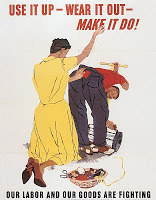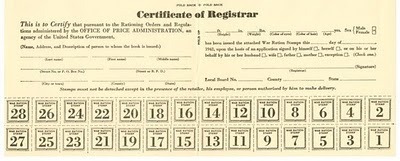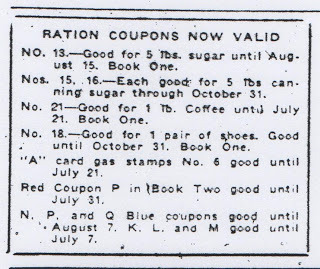Sarah Sundin's Blog, page 527
March 25, 2011
Today in World War II History
70 Years Ago—Mar. 25, 1941: Yugoslavia signs Tripartite Pact with Germany.
Published on March 25, 2011 03:00
March 24, 2011
Today in World War II History
70 Years Ago—Mar. 24, 1941: In North Africa Gen. Erwin Rommel launches the first attack of the Afrika Korps against the British, takes El Agheila, Libya.
Published on March 24, 2011 03:00
March 23, 2011
Book Beat - Here Burns My Candle
 If you want to see historical fiction done right, read Liz Curtis Higgs. She won me over completely with her compelling Scottish series based on the biblical story of Jacob, Leah, and Rachel (Thorn in My Heart, Fair Is the Rose, Whence Came a Prince, and Grace in Thine Eyes). I was thrilled to see her new series based on the biblical story of Ruth and Naomi. Here Burns My Candle came out this fall, and the sequel, Mine Is the Night, released this month. Knowing my own impatience, I waited until the sequel was available before starting the first novel.
Here Burns My Candle
does not disappoint. The story transports you to Edinburgh in 1745, on the verge of the Jacobite rebellion. Widow Lady Marjory Kerr lives with her two sons and their wives. With her highland background and former life as a gifted seamstress, Lady Elisabeth Kerr isn't accepted by her patrician mother-in-law and even shallower sister-in-law, Janet. When "Bonnie Prince Charlie" occupies Edinburgh during the Jacobite Rebellion, allegiances shift, and danger threatens the Kerrs' place in high society. As a string of tragedies hits the family, secrets a
If you want to see historical fiction done right, read Liz Curtis Higgs. She won me over completely with her compelling Scottish series based on the biblical story of Jacob, Leah, and Rachel (Thorn in My Heart, Fair Is the Rose, Whence Came a Prince, and Grace in Thine Eyes). I was thrilled to see her new series based on the biblical story of Ruth and Naomi. Here Burns My Candle came out this fall, and the sequel, Mine Is the Night, released this month. Knowing my own impatience, I waited until the sequel was available before starting the first novel.
Here Burns My Candle
does not disappoint. The story transports you to Edinburgh in 1745, on the verge of the Jacobite rebellion. Widow Lady Marjory Kerr lives with her two sons and their wives. With her highland background and former life as a gifted seamstress, Lady Elisabeth Kerr isn't accepted by her patrician mother-in-law and even shallower sister-in-law, Janet. When "Bonnie Prince Charlie" occupies Edinburgh during the Jacobite Rebellion, allegiances shift, and danger threatens the Kerrs' place in high society. As a string of tragedies hits the family, secrets a
 re revealed and true character shines forth. Liz Curtis Higgs does it all well. Marjory and Elisabeth are beautifully drawn characters, full of strengths and weaknesses that make them come to life. The setting is scrumptious. I have been blessed to visit Edinburgh's charming streets in person, and it was a joy to visit them in print. Higgs' extensive research shows in every detail, but never detracts from the interpersonal drama. The dialect is delightful, and always understandable in context - if not, there's a glossary in the back of the book. The only weakness in the story is due to the fact that it's based on a biblical story. Therefore, if you know the book of Ruth, you know the essence of what will happen to the main characters. However, I was still driven along, wanting to know exactly how it would unfold and how the characters would grow and change. If you want to be transported to a different era with fascinating characters, you'll love Here Burns My Candle. I'm eagerly looking forward to reading Mine Is the Night.
re revealed and true character shines forth. Liz Curtis Higgs does it all well. Marjory and Elisabeth are beautifully drawn characters, full of strengths and weaknesses that make them come to life. The setting is scrumptious. I have been blessed to visit Edinburgh's charming streets in person, and it was a joy to visit them in print. Higgs' extensive research shows in every detail, but never detracts from the interpersonal drama. The dialect is delightful, and always understandable in context - if not, there's a glossary in the back of the book. The only weakness in the story is due to the fact that it's based on a biblical story. Therefore, if you know the book of Ruth, you know the essence of what will happen to the main characters. However, I was still driven along, wanting to know exactly how it would unfold and how the characters would grow and change. If you want to be transported to a different era with fascinating characters, you'll love Here Burns My Candle. I'm eagerly looking forward to reading Mine Is the Night.
Published on March 23, 2011 05:00
Today in World War II History
70 Years Ago—Mar. 23, 1941: Heavy Luftwaffe attack on Malta leads RAF to withdraw bombers and flying boats.
Published on March 23, 2011 03:00
March 22, 2011
Today in World War II History
70 Years Ago—Mar. 22, 1941: US 99th Pursuit Squadron activated, the first black unit in the Army Air Corps. Grand Coulee Dam opens in Washington state, the world's largest source of electric power.
Published on March 22, 2011 03:00
March 21, 2011
Make It Do - Shoe Rationing in World War II
 During World War II, many items were rationed in the United States, including shoes.
During World War II, many items were rationed in the United States, including shoes.Why Shoes?
Due to the serious rubber shortage (see http://sarahsundin.blogspot.com/2011/01/make-it-do-tire-rationing-in-world-war.html), footwear made of rubber or with rubber soles was rationed or unavailable. Also, the military had a high need for leather, not just for shoes and combat boots but for those popular leather flight jackets. As a result, civilians made do with less.
Rationing of Rubber Footwear
Starting September 30, 1942, men's rubber boots and rubber work shoes were placed under rationing. To obtain a new pair, a man had to apply to the local ration board, prove he needed the shoes for essential industry—not for sport—and turn in the old pair. Galoshes and overshoes were not rationed because they used less crude rubber, but sportsmen couldn't get boots, and sneakers were no longer produced.

Shoe Rationing
On February 7, 1943, the United States instituted rationing of leather shoes. Each man, woman, and child could purchase up to three pairs of leather shoes a year, using designated stamps in War Ration Book One, and later in Books Three and Four. To simplify the system, only six shades of leather were produced. However, the supply of leather continued to decrease. On March 20, 1944, the ration was reduced to two pairs of leather shoes per year. Shoe rationing continued until October 30, 1945.
 Exceptions
ExceptionsThe strict rule that the ration stamp had to be torn from the book in the presence of the retailer was lifted for catalog purchases. If you wanted an extra pair of shoes, you had to fill out a long application at the ration board, listing every pair of footwear you owned, and explaining why another pair was essential for your occupation and why another pair was required to prevent serious hardship.

What about Children?
No exceptions were made for children and their rapidly growing feet. Families pooled their stamps, and adults made do with fewer shoes to provide for their children's needs. However, pediatricians and podiatrists complained publicly that shoe rationing would produce a generation of "foot cripples."
Making Do
To make do with less, people took care of the footwear they already owned, keeping rubber boots clean, dry, and away from excess heat or cold, and repairing shoes and boots whenever possible. Shoes made of fabric, such as espadrilles, were not rationed and became fashionable. Women also turned to fabric purses and belts.
Some people did not make do. Theft and black market profiteering were a continuing problem. For example, on May 3, 1944, a man was arrested in Pittsburg, California for stealing seven pairs of shoes from a shipment. The June 8, 1944 issue of the Antioch Ledger reported his sentence—six months or $500.
How would you do with only two or three new pairs of shoes a year? Try not to hyperventilate.
Published on March 21, 2011 05:00
Today in World War II History
70 Years Ago—Mar. 21, 1941: Italians in Jarabub, Libya surrender to British & Australians after 15-wk siege. U forms the 99th Pursuit Squadron, the first black unit in the Army Air Corps.
Published on March 21, 2011 03:00
March 20, 2011
Today in World War II History
70 Years Ago—Mar. 20, 1941: British take Hargeisa from Italians in British Somaliland.
Published on March 20, 2011 03:00
March 19, 2011
Today in World War II History
70 Years Ago—Mar. 19, 1941: In heaviest Luftwaffe raid on London since December 1940, 750 are killed.
Published on March 19, 2011 03:00
March 18, 2011
RSVP
 The rain sneaked under my hood as I ran my son up the walkway for a birthday party. I felt for the mother, who would soon have a houseful of sugar-addled, rainy-day-crazed kids.
The rain sneaked under my hood as I ran my son up the walkway for a birthday party. I felt for the mother, who would soon have a houseful of sugar-addled, rainy-day-crazed kids."How many are you expecting?" I asked the hostess.
Her forehead puckered. "I have no idea. No one RSVP'd."
A twinge of discomfort. No one? I knew I'd left my RSVP. "Didn't you get my message?"
She flipped her hand. "Oh, we never check our machine."
Huh???
On the invitation she asked for a response, she had an answering machine hooked up, but she never bothered to check her messages?
As I drove home, the windshield wipers protested, and I wondered if I'd ever been guilty of the same lapse of logic. Do I shoot God a list of requests, bustle through the day, and grumble about how God never answers my prayers?
I need to check my messages.
The Lord speaks to us in several ways—through His written Word, prayer, circumstances, and the voices of His people. Has a pastor's sermon ever spoken directly to you? Has a Christian friend ever asked a question that cut to the core of your issue? Have you ever been barraged by verses and conversations on the same theme? That's God speaking, and it's exciting.
To experience this, we need to structure our lives so we have plenty of time in the Bible, in prayer, in church, and with God's people. But we also need to live our lives expecting God to speak to us, tuning our hearts to listen to Him, and waiting in eager anticipation.
Excuse me, but I think I hear my Bible beeping at me.
Published on March 18, 2011 05:00



